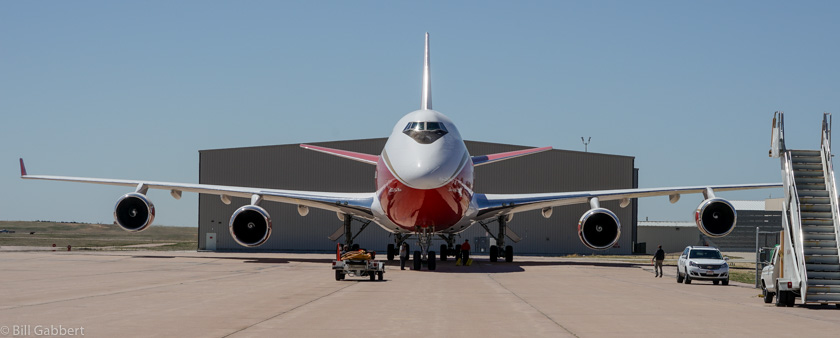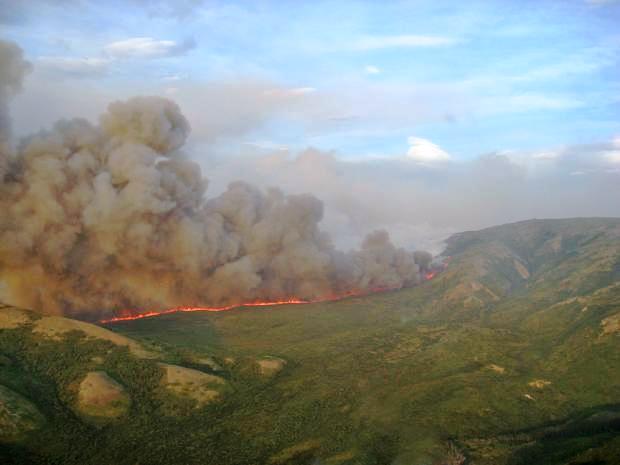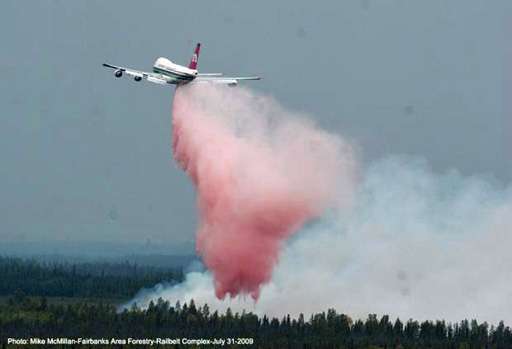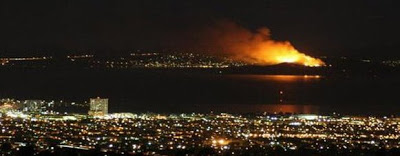Above: The 747 Supertanker conducts a test drop at Colorado Springs May 4, 2016. Photo by Bill Gabbert.
(This article first appeared on Fire Aviation.)
The 747 SuperTanker has received interim approval from the Interagency Airtanker Board (IAB) according to Jennifer Jones, a spokesperson for the U.S. Forest Service. Jim Wheeler, President and CEO of Global SuperTanker, the operator of the air tanker, said he first heard from the IAB on January 6 that the approval had been granted.
Interim approval is the last step before full approval. It means the company can compete for and receive contracts to serve as an air tanker for federal agencies in the United States. If it receives a contract, the performance and effectiveness of the aircraft will be evaluated while under this status. Then if satisfactory, it can be elevated to full approval. The interim approval is valid through June 15, 2017, Mrs. Jones said.
When the Neptune Aviation BAe-146s were first converted to air tankers they were given “interim” status while bugs in the new system were found and eventually mitigated. For example, the company added additional drop doors farther forward on the fuselage in order to improve the dispersal of retardant while making a downhill drop.
However the retardant delivery system on this 747 has been used on previous 747s and was fully certified by the IAB years ago. Over the last year it has been installed in a 747-400 which has more powerful engines than the 747-100 and 747-200 used by Evergreen, the company that first built a 747 air tanker. Global Supertanker bought the hardware and intellectual property for the retardant system when Evergreen declared bankruptcy.
The 747 can hold 19,200 gallons, much more than any other air tanker. For comparison, the DC-10 very large air tanker carries 11,600 gallons, while the BAe-146, RJ85, and C-130 hold up to 3,000 to 3,500 gallons. The P2V Korean War vintage aircraft that has been the workhorse air tanker for decades usually carries less than 2,000 gallons. The S-2T used by CAL FIRE holds up to 1,200 gallons.
Last summer the 747 Supertanker received a Supplemental Type Certificate from the FAA and the agency’s Federal Aviation Regulations Part 137 certificate.

In November it made a non-stop flight to Israel and after arriving dropped on two wildfires at the request of the country’s government.
“IAB approval is an essential requirement in airtanker contracts for some wildfire agencies, including the U.S. Forest Service (USFS),” Mr. Wheeler said. “With this approval, we look forward to bidding on – and winning – upcoming domestic and international contracts. We are grateful and excited to join the team of airtankers currently serving a critical mission for the United States and globally, and look forward to continuing to work with the USFS, CAL FIRE, and the IAB during the final approval process.”







